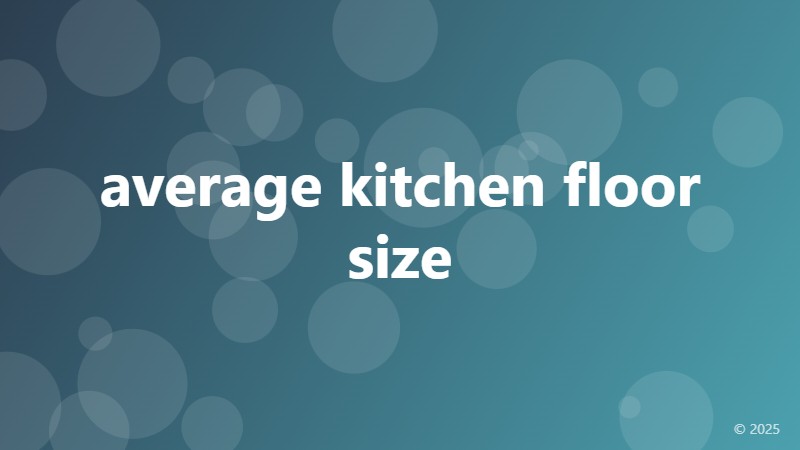average kitchen floor size

Understanding the Average Kitchen Floor Size
When it comes to designing or renovating a kitchen, one of the most critical aspects to consider is the floor size. The kitchen floor size can greatly impact the overall functionality, comfort, and aesthetic appeal of the space. But what is the average kitchen floor size, and how can it influence your kitchen design decisions?
Kitchen Floor Size: Averages and Standards
In the United States, the average kitchen floor size varies depending on the type of residence and its age. According to the National Association of Home Builders, the average kitchen floor size in a single-family home is around 105 square feet. However, this number can range from 70 to 140 square feet or more, depending on the specific design and layout.
In terms of kitchen shape, L-shaped kitchens are the most common, accounting for around 40% of all kitchen layouts. U-shaped kitchens come in second, making up around 25% of kitchen designs. These shapes often influence the overall floor size, with L-shaped kitchens typically requiring more floor space than U-shaped ones.
Factors Affecting Kitchen Floor Size
Several factors can impact the average kitchen floor size, including:
- Room layout and design: The shape and layout of the kitchen can greatly influence the floor size. For example, a kitchen with a central island or a galley layout may require more floor space than a kitchen with a simple L-shape.
- Appliance size and number: The size and number of appliances, such as refrigerators, ovens, and dishwashers, can also affect the kitchen floor size. Larger appliances or multiple units may require more floor space.
- Work triangle: The work triangle, which consists of the sink, stove, and refrigerator, is a crucial aspect of kitchen design. The distance between these three points can influence the overall floor size, with a larger work triangle often requiring more floor space.
Designing with Average Kitchen Floor Size in Mind
When designing a kitchen, it's essential to keep the average kitchen floor size in mind. Here are some tips to help you make the most of your kitchen space:
- Opt for space-saving appliances: Consider using compact or integrated appliances to minimize floor space usage.
- Choose a functional layout: Select a kitchen layout that maximizes functionality while minimizing floor space usage.
- Use vertical space: Make the most of your kitchen's vertical space by installing wall-mounted shelves, cabinets, or appliances.
By understanding the average kitchen floor size and its influencing factors, you can create a kitchen design that is both functional and aesthetically pleasing. Whether you're renovating an existing kitchen or building a new one, keeping the average kitchen floor size in mind can help you make informed design decisions.